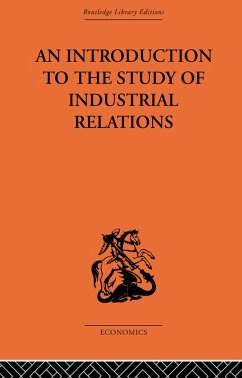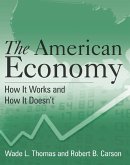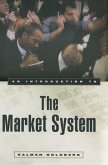J. Richardson
An Introduction to the Study of Industrial Relations (eBook, ePUB)
45,95 €
45,95 €
inkl. MwSt.
Sofort per Download lieferbar

23 °P sammeln
45,95 €
Als Download kaufen

45,95 €
inkl. MwSt.
Sofort per Download lieferbar

23 °P sammeln
Jetzt verschenken
Alle Infos zum eBook verschenken
45,95 €
inkl. MwSt.
Sofort per Download lieferbar
Alle Infos zum eBook verschenken

23 °P sammeln
J. Richardson
An Introduction to the Study of Industrial Relations (eBook, ePUB)
- Format: ePub
- Merkliste
- Auf die Merkliste
- Bewerten Bewerten
- Teilen
- Produkt teilen
- Produkterinnerung
- Produkterinnerung

Bitte loggen Sie sich zunächst in Ihr Kundenkonto ein oder registrieren Sie sich bei
bücher.de, um das eBook-Abo tolino select nutzen zu können.
Hier können Sie sich einloggen
Hier können Sie sich einloggen
Sie sind bereits eingeloggt. Klicken Sie auf 2. tolino select Abo, um fortzufahren.

Bitte loggen Sie sich zunächst in Ihr Kundenkonto ein oder registrieren Sie sich bei bücher.de, um das eBook-Abo tolino select nutzen zu können.
This book gives a comprehensive survey of the field of Industrial Relations, focusing on general principles and problems. Illustrations are drawn from the practices adopted in many parts of the world such as Australia, France, Germany and the USA. Contents include chapters on the following: * Personnel Management * Training * Methods of Wage Payment * Job Evaluation * Profit-Sharing and Co-partnership * Trade Unionism * Employers' Organizations * Collective Bargaining * Wage Bases * Equal Opportunities * Conciliation and Arbitration
- Geräte: eReader
- mit Kopierschutz
- eBook Hilfe
- Größe: 7.75MB
Andere Kunden interessierten sich auch für
![Industrial Relations (eBook, ePUB) Industrial Relations (eBook, ePUB)]() Michael PooleIndustrial Relations (eBook, ePUB)45,95 €
Michael PooleIndustrial Relations (eBook, ePUB)45,95 €![Towards a New Industrial Democracy (eBook, ePUB) Towards a New Industrial Democracy (eBook, ePUB)]() Michael PooleTowards a New Industrial Democracy (eBook, ePUB)33,95 €
Michael PooleTowards a New Industrial Democracy (eBook, ePUB)33,95 €![The American Economy: A Student Study Guide (eBook, ePUB) The American Economy: A Student Study Guide (eBook, ePUB)]() Wade L. ThomasThe American Economy: A Student Study Guide (eBook, ePUB)54,95 €
Wade L. ThomasThe American Economy: A Student Study Guide (eBook, ePUB)54,95 €![Gender and the European Labour Market (eBook, ePUB) Gender and the European Labour Market (eBook, ePUB)]() Gender and the European Labour Market (eBook, ePUB)51,95 €
Gender and the European Labour Market (eBook, ePUB)51,95 €![An Introduction to the Market System (eBook, ePUB) An Introduction to the Market System (eBook, ePUB)]() Kalman GoldbergAn Introduction to the Market System (eBook, ePUB)34,95 €
Kalman GoldbergAn Introduction to the Market System (eBook, ePUB)34,95 €![The Political Economy of the Living Wage: A Study of Four Cities (eBook, ePUB) The Political Economy of the Living Wage: A Study of Four Cities (eBook, ePUB)]() Oren M. Levin-WaldmanThe Political Economy of the Living Wage: A Study of Four Cities (eBook, ePUB)22,95 €
Oren M. Levin-WaldmanThe Political Economy of the Living Wage: A Study of Four Cities (eBook, ePUB)22,95 €![The Origins of Economic Democracy (eBook, ePUB) The Origins of Economic Democracy (eBook, ePUB)]() Michael PooleThe Origins of Economic Democracy (eBook, ePUB)33,95 €
Michael PooleThe Origins of Economic Democracy (eBook, ePUB)33,95 €-
-
-
This book gives a comprehensive survey of the field of Industrial Relations, focusing on general principles and problems. Illustrations are drawn from the practices adopted in many parts of the world such as Australia, France, Germany and the USA. Contents include chapters on the following: * Personnel Management * Training * Methods of Wage Payment * Job Evaluation * Profit-Sharing and Co-partnership * Trade Unionism * Employers' Organizations * Collective Bargaining * Wage Bases * Equal Opportunities * Conciliation and Arbitration
Dieser Download kann aus rechtlichen Gründen nur mit Rechnungsadresse in A, B, BG, CY, CZ, D, DK, EW, E, FIN, F, GR, HR, H, IRL, I, LT, L, LR, M, NL, PL, P, R, S, SLO, SK ausgeliefert werden.
Produktdetails
- Produktdetails
- Verlag: Taylor & Francis eBooks
- Seitenzahl: 448
- Erscheinungstermin: 16. Oktober 2013
- Englisch
- ISBN-13: 9781134562541
- Artikelnr.: 39705192
- Verlag: Taylor & Francis eBooks
- Seitenzahl: 448
- Erscheinungstermin: 16. Oktober 2013
- Englisch
- ISBN-13: 9781134562541
- Artikelnr.: 39705192
- Herstellerkennzeichnung Die Herstellerinformationen sind derzeit nicht verfügbar.
Dr J Richardson
1. IntroductionThe Problem of Industrial RelationsObjects and Scope of
StudyPART 1 2. Personnel ManagementGeneral PurposeTypes of
OrganizationScopeQualities of Personnel Officers3. Selection4.
TrainingMotion StudyTraining for Management5. Time StudiesThe Bedaux System
of Work Measurement6. Methods of Wage PaymentTime RatesPiece RatesBonus
Systems7. Job Evaluation, Merit Rating, and Non-Wage IncentivesNon-Wage
Incentives8. Profit-Sharing and Co-PartnershipTypes of
SchemeDevelopmentTrade Union AttitudesValue as an Incentive9. Joint
Consultation at the WorkplacePurposes and Subjects of ConsultationPower of
Joint Councils and CommitteesRepresentation of Management and WorkplacePART
2 10. Trade UnionismFreedom of AssociationPurposes of Trade Unions11. Bases
of Trade Union OrganizationStructure and GovernmentThe Problem of the
Closed ShopTrade Union RivalriesCo-operation and Amalgamation12. The Legal
Position of Trade UnionsThe Right to StrikeThe Position of the Civil
ServantsPicketing and IntimidationBreach of ContractImmunity and Security
of Trade Union Funds13. Political Action by Trade Unions14. Employers'
OrganizationsStructureObjects and Policy15. Collective
BargainingRecognition of Trade UnionsUnfair PracticesBargaining
MachineryProvisions of AgreementsSome Legal Aspects of Collective
AgreementsIndustrial DisputesVoluntary Conciliation and ArbitrationPART 3
16. Wage Bases and PrinciplesCapacity of IndustryThe Living
WageCost-of-Living Sliding ScalesSelling-Price Sliding Scales17. Relative
WagesWage differences between IndustriesWage differences between Skilled
and Unskilled WorkpeopleRelative Wages of Men and WomenWage Differences
between Localities18. Equal Pay for Equal Work19. Family Allowances20.
Hours of WorkPART 4 21. Purposes and Scope of Intervention22. Intervention
in Wage RegulationThe Fair Wages ClauseIntervention in Private
IndustryMachinery for RegulationCriteria for Fixing Rates23. Problems of a
National Wages PolicyFactors tending towards National StandardsSome
Elements of a PolicyPossibilities and Limitations24. Conciliation and
ArbitrationConciliationVoluntary ArbitrationCompulsory ArbitrationCourts of
EnquiryMembership of Arbitration TribunalsThe Common RuleEnforcement of
Binding AwardsEffects of Trade Union Unions and Employers' Organizations25.
Relations in Nationalized Industries26. Social SecurityOrigin and
DevelopmentThe Problem of RiskFinancial Aspects, Contributions and
BenefitsPART 5 27. International AspectsKinds and Functions of
International OrganizationsThe International Labour OrganizationConclusions
StudyPART 1 2. Personnel ManagementGeneral PurposeTypes of
OrganizationScopeQualities of Personnel Officers3. Selection4.
TrainingMotion StudyTraining for Management5. Time StudiesThe Bedaux System
of Work Measurement6. Methods of Wage PaymentTime RatesPiece RatesBonus
Systems7. Job Evaluation, Merit Rating, and Non-Wage IncentivesNon-Wage
Incentives8. Profit-Sharing and Co-PartnershipTypes of
SchemeDevelopmentTrade Union AttitudesValue as an Incentive9. Joint
Consultation at the WorkplacePurposes and Subjects of ConsultationPower of
Joint Councils and CommitteesRepresentation of Management and WorkplacePART
2 10. Trade UnionismFreedom of AssociationPurposes of Trade Unions11. Bases
of Trade Union OrganizationStructure and GovernmentThe Problem of the
Closed ShopTrade Union RivalriesCo-operation and Amalgamation12. The Legal
Position of Trade UnionsThe Right to StrikeThe Position of the Civil
ServantsPicketing and IntimidationBreach of ContractImmunity and Security
of Trade Union Funds13. Political Action by Trade Unions14. Employers'
OrganizationsStructureObjects and Policy15. Collective
BargainingRecognition of Trade UnionsUnfair PracticesBargaining
MachineryProvisions of AgreementsSome Legal Aspects of Collective
AgreementsIndustrial DisputesVoluntary Conciliation and ArbitrationPART 3
16. Wage Bases and PrinciplesCapacity of IndustryThe Living
WageCost-of-Living Sliding ScalesSelling-Price Sliding Scales17. Relative
WagesWage differences between IndustriesWage differences between Skilled
and Unskilled WorkpeopleRelative Wages of Men and WomenWage Differences
between Localities18. Equal Pay for Equal Work19. Family Allowances20.
Hours of WorkPART 4 21. Purposes and Scope of Intervention22. Intervention
in Wage RegulationThe Fair Wages ClauseIntervention in Private
IndustryMachinery for RegulationCriteria for Fixing Rates23. Problems of a
National Wages PolicyFactors tending towards National StandardsSome
Elements of a PolicyPossibilities and Limitations24. Conciliation and
ArbitrationConciliationVoluntary ArbitrationCompulsory ArbitrationCourts of
EnquiryMembership of Arbitration TribunalsThe Common RuleEnforcement of
Binding AwardsEffects of Trade Union Unions and Employers' Organizations25.
Relations in Nationalized Industries26. Social SecurityOrigin and
DevelopmentThe Problem of RiskFinancial Aspects, Contributions and
BenefitsPART 5 27. International AspectsKinds and Functions of
International OrganizationsThe International Labour OrganizationConclusions
1. IntroductionThe Problem of Industrial RelationsObjects and Scope of
StudyPART 1 2. Personnel ManagementGeneral PurposeTypes of
OrganizationScopeQualities of Personnel Officers3. Selection4.
TrainingMotion StudyTraining for Management5. Time StudiesThe Bedaux System
of Work Measurement6. Methods of Wage PaymentTime RatesPiece RatesBonus
Systems7. Job Evaluation, Merit Rating, and Non-Wage IncentivesNon-Wage
Incentives8. Profit-Sharing and Co-PartnershipTypes of
SchemeDevelopmentTrade Union AttitudesValue as an Incentive9. Joint
Consultation at the WorkplacePurposes and Subjects of ConsultationPower of
Joint Councils and CommitteesRepresentation of Management and WorkplacePART
2 10. Trade UnionismFreedom of AssociationPurposes of Trade Unions11. Bases
of Trade Union OrganizationStructure and GovernmentThe Problem of the
Closed ShopTrade Union RivalriesCo-operation and Amalgamation12. The Legal
Position of Trade UnionsThe Right to StrikeThe Position of the Civil
ServantsPicketing and IntimidationBreach of ContractImmunity and Security
of Trade Union Funds13. Political Action by Trade Unions14. Employers'
OrganizationsStructureObjects and Policy15. Collective
BargainingRecognition of Trade UnionsUnfair PracticesBargaining
MachineryProvisions of AgreementsSome Legal Aspects of Collective
AgreementsIndustrial DisputesVoluntary Conciliation and ArbitrationPART 3
16. Wage Bases and PrinciplesCapacity of IndustryThe Living
WageCost-of-Living Sliding ScalesSelling-Price Sliding Scales17. Relative
WagesWage differences between IndustriesWage differences between Skilled
and Unskilled WorkpeopleRelative Wages of Men and WomenWage Differences
between Localities18. Equal Pay for Equal Work19. Family Allowances20.
Hours of WorkPART 4 21. Purposes and Scope of Intervention22. Intervention
in Wage RegulationThe Fair Wages ClauseIntervention in Private
IndustryMachinery for RegulationCriteria for Fixing Rates23. Problems of a
National Wages PolicyFactors tending towards National StandardsSome
Elements of a PolicyPossibilities and Limitations24. Conciliation and
ArbitrationConciliationVoluntary ArbitrationCompulsory ArbitrationCourts of
EnquiryMembership of Arbitration TribunalsThe Common RuleEnforcement of
Binding AwardsEffects of Trade Union Unions and Employers' Organizations25.
Relations in Nationalized Industries26. Social SecurityOrigin and
DevelopmentThe Problem of RiskFinancial Aspects, Contributions and
BenefitsPART 5 27. International AspectsKinds and Functions of
International OrganizationsThe International Labour OrganizationConclusions
StudyPART 1 2. Personnel ManagementGeneral PurposeTypes of
OrganizationScopeQualities of Personnel Officers3. Selection4.
TrainingMotion StudyTraining for Management5. Time StudiesThe Bedaux System
of Work Measurement6. Methods of Wage PaymentTime RatesPiece RatesBonus
Systems7. Job Evaluation, Merit Rating, and Non-Wage IncentivesNon-Wage
Incentives8. Profit-Sharing and Co-PartnershipTypes of
SchemeDevelopmentTrade Union AttitudesValue as an Incentive9. Joint
Consultation at the WorkplacePurposes and Subjects of ConsultationPower of
Joint Councils and CommitteesRepresentation of Management and WorkplacePART
2 10. Trade UnionismFreedom of AssociationPurposes of Trade Unions11. Bases
of Trade Union OrganizationStructure and GovernmentThe Problem of the
Closed ShopTrade Union RivalriesCo-operation and Amalgamation12. The Legal
Position of Trade UnionsThe Right to StrikeThe Position of the Civil
ServantsPicketing and IntimidationBreach of ContractImmunity and Security
of Trade Union Funds13. Political Action by Trade Unions14. Employers'
OrganizationsStructureObjects and Policy15. Collective
BargainingRecognition of Trade UnionsUnfair PracticesBargaining
MachineryProvisions of AgreementsSome Legal Aspects of Collective
AgreementsIndustrial DisputesVoluntary Conciliation and ArbitrationPART 3
16. Wage Bases and PrinciplesCapacity of IndustryThe Living
WageCost-of-Living Sliding ScalesSelling-Price Sliding Scales17. Relative
WagesWage differences between IndustriesWage differences between Skilled
and Unskilled WorkpeopleRelative Wages of Men and WomenWage Differences
between Localities18. Equal Pay for Equal Work19. Family Allowances20.
Hours of WorkPART 4 21. Purposes and Scope of Intervention22. Intervention
in Wage RegulationThe Fair Wages ClauseIntervention in Private
IndustryMachinery for RegulationCriteria for Fixing Rates23. Problems of a
National Wages PolicyFactors tending towards National StandardsSome
Elements of a PolicyPossibilities and Limitations24. Conciliation and
ArbitrationConciliationVoluntary ArbitrationCompulsory ArbitrationCourts of
EnquiryMembership of Arbitration TribunalsThe Common RuleEnforcement of
Binding AwardsEffects of Trade Union Unions and Employers' Organizations25.
Relations in Nationalized Industries26. Social SecurityOrigin and
DevelopmentThe Problem of RiskFinancial Aspects, Contributions and
BenefitsPART 5 27. International AspectsKinds and Functions of
International OrganizationsThe International Labour OrganizationConclusions







